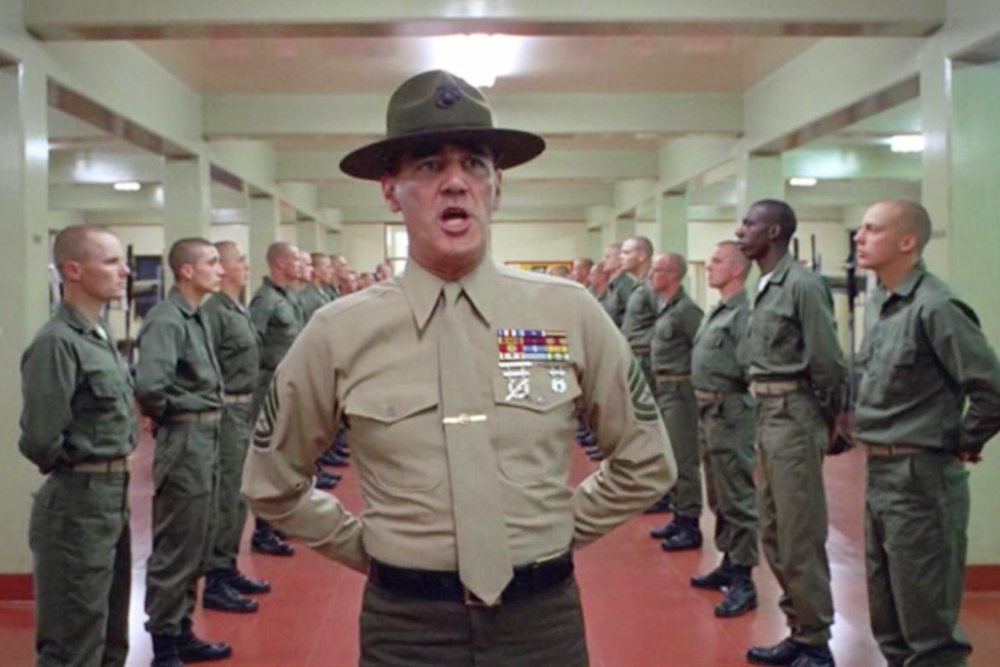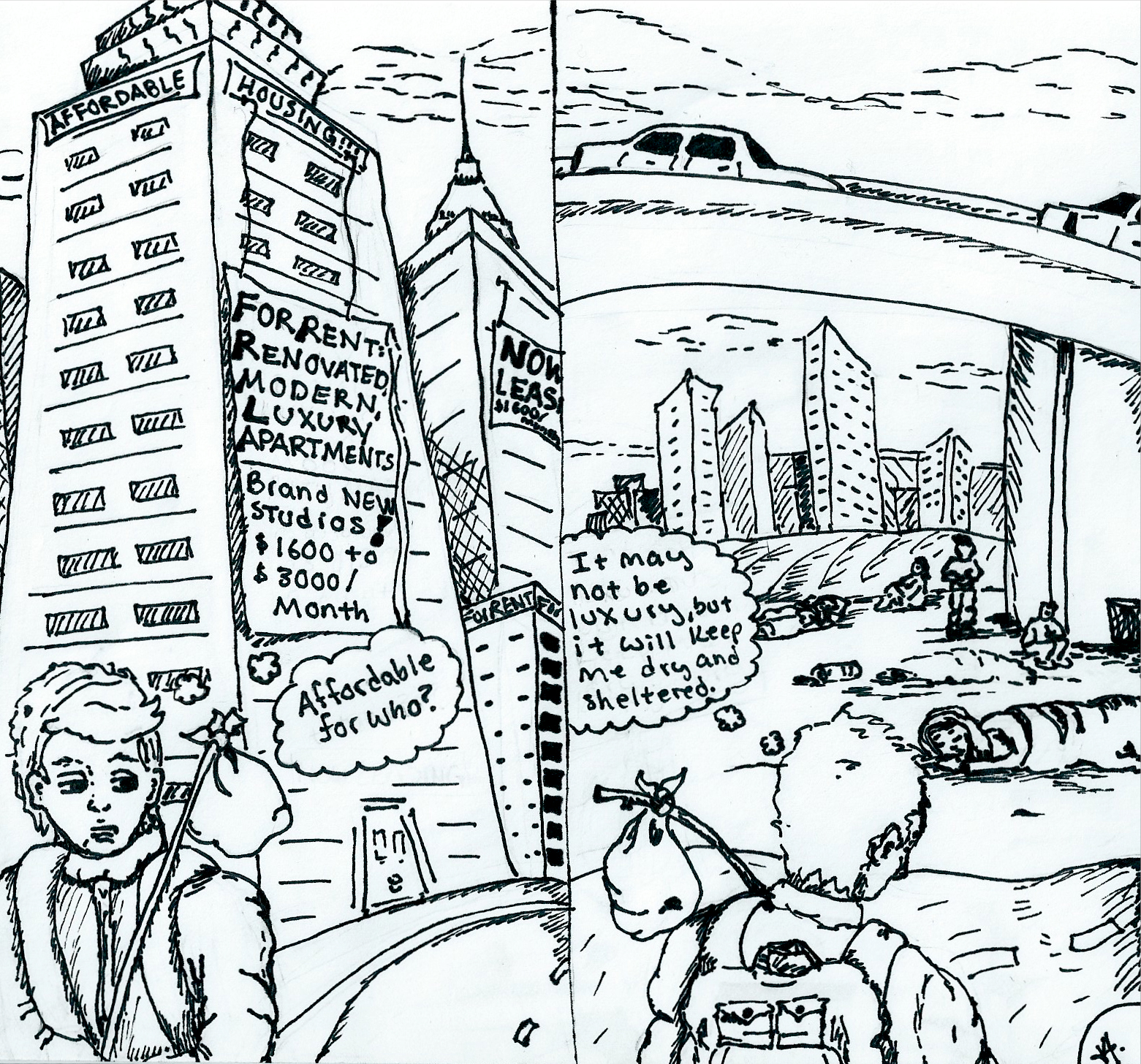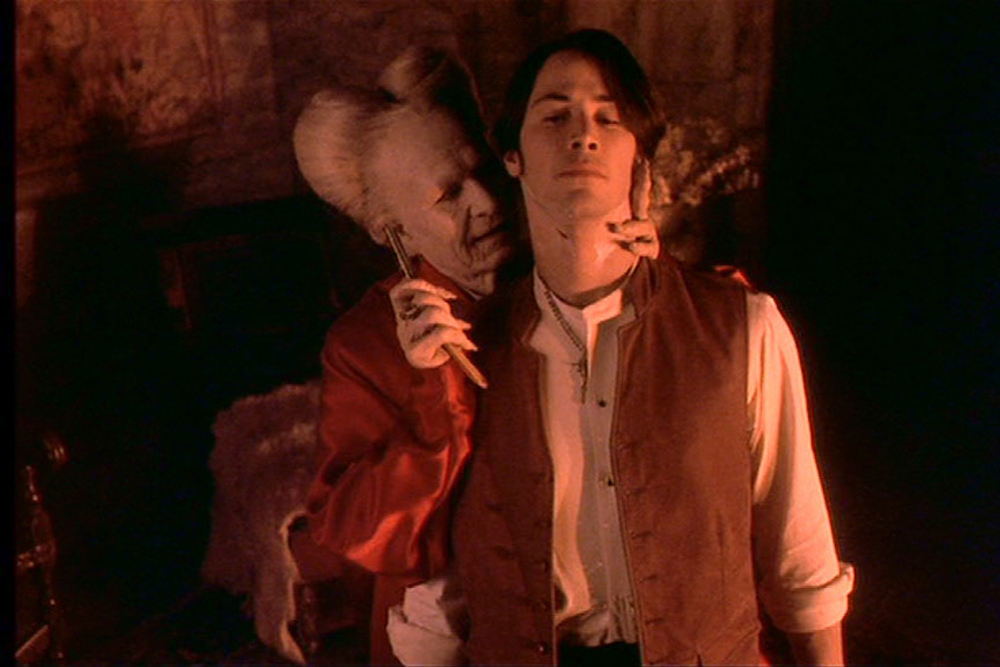Stanley Kubrick’s 1987 Full Metal Jacket is much more than just a war movie or an anti-war movie. Full Metal Jacket is a riveting, albeit disjointed at times, exploration of violence, evil, masculinity and the duality of humanity set during the Vietnam War from 1967–1968.
The film follows Private Joker (Matthew Modine), first through basic training of the Marine Corps on Parris Island and then later in Vietnam, where he eventually becomes a Sergeant and combat correspondent during the Tet Offensive.
The film begins with a montage of recruits having their heads shaved while Johnny Wright’s “Hello Vietnam” plays. From the get-go, Full Metal Jacket sets a somber and brutal tone, bathed in irony and a dark sense of humor. The dejected look on the recruits’ faces is both heartbreaking and laughable, and this type of duality becomes a key theme throughout the film.
Immediately after the opening montage, we are introduced to Gunnery Sergeant Hartman, played by R. Lee Ermey, who gives one of the most iconic and well-known speeches in film history.
Ermey’s Golden Globe-nominated performance alone makes the film worth watching, he’s that good. He’s ruthless, a self-described asshole and is one of the most amusing characters in Kubrick’s filmography.
At this point, his speeches and his performance in Full Metal Jacket have become canon for movie buffs, and if you haven’t experienced it for yourself, it is very worth seeing.
However, Ermey isn’t the only performance in Full Metal Jacket’s first half that is worth noting. Vincent D’Onofrio plays Leonard Lawrence (aka Pvt. Pyle) and gives a brutal depiction of a soldier struggling with his new identity, or lack thereof.
Pvt. Joker eventually takes Pvt. Pyle under his wing and his soldiering shows improvement—for a while. Using the classic zoom shot that Kubrick loves so much, D’Onofrio portrays the harrowing dehumanization of Lawrence in just a few shots, and that is by far one of the most impressive elements of Full Metal Jacket.
Both Ermey and D’Onofrio’s performances make the first half of the film incredibly absorbing, and the events that occur on the last night of basic training resonate even louder because of those performances.
It’s unfortunate, then, that the latter half of the film never reaches the same height. At this point, Pvt. Joker is now Sgt. Joker, a combat correspondent for the Stars and Stripes newspaper. The film picks back up just before the Tet Offensive, just in time for Joker’s fellow Marines to comment on his lack of thousand-yard stare.
Joker and his fellow journalist Pvt. Rafterman (Kevyn Major Howard) are sent to Phu Bai where they soon find themselves in the midst of the Battle of Hu, where Joker reconnects with Sgt. Cowboy (Arliss Howard), one of the recruits he graduated with on Parris Island.
Vietnam proves to be a much more difficult place for Joker to come to terms with, with Joker being reprimanded at one point by a commanding officer for having both a peace sign pin on his uniform and the words “Born To Kill” emblazoned across his helmet.
There are tons of interesting ideas presented throughout the second half of Full Metal Jacket, and there are plenty of intense set pieces, but none of these concepts reach the same heights as the ones earlier in the film.
Maybe it’s the lack of indelible performances in the second half that result in it never quite reaching its full potential, but that doesn’t mean the second half is bad by any means. The characters, themes and events that occur in Vietnam feel more disjointed and unfocused than those that occurred previously on Parris Island, but fortunately the climax of the film manages to tie some of these thematic threads together in a satisfying manner.
Nonetheless, Full Metal Jacket is very much worth your time, even if only to hear Sgt. Hartman’s speeches in a theater setting. While the second half of the film doesn’t quite compare to the first, Full Metal Jacket remains an entertaining and thought-provoking film throughout.






